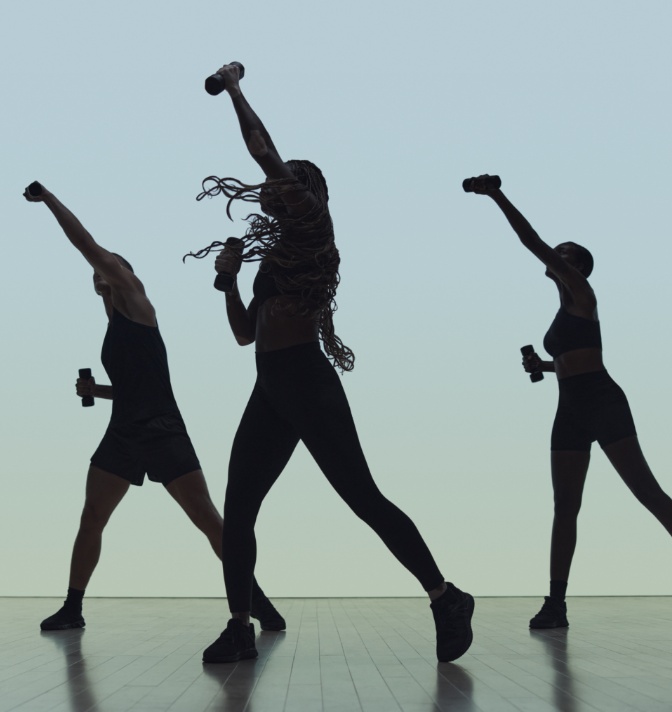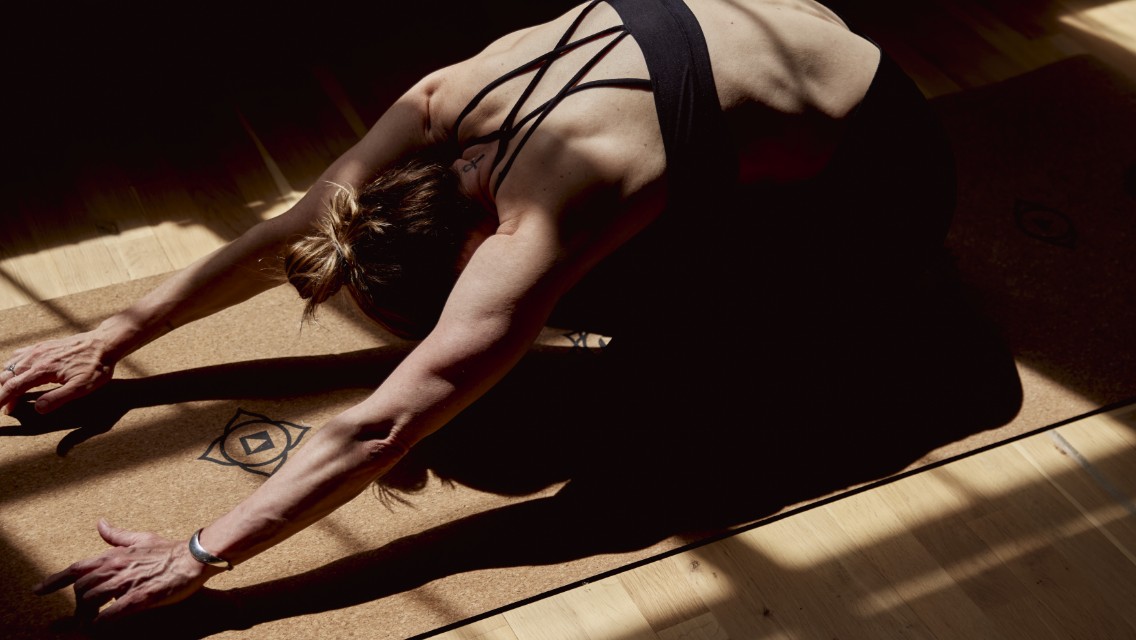Starting a yoga practice may seem like an overwhelming endeavor, especially if it’s an exercise modality that’s new to you. At Life Time, there are several yoga classes to choose from, with offerings for a range of abilities and preferences. The best place to begin? ROOT, according to our expert.
“ROOT is a great class for learning the fundamentals of yoga,” says Lindsay Payne, certified yoga instructor at Life Time in Edina, Minn. “People who don’t know anything about yoga can really step in and start from scratch. At the same time, experienced yogis may enjoy the slower-paced flow.
“This class is designed for you to consciously be in your body and notice the sensations in your muscles,” she explains. “We want you to notice what’s feeling tight or tense, and we want you to notice what’s feeling good too. You’ll be challenged to find new sensations in your body and new shapes that you may have never taken before.”
To get an idea of what this class is like, we asked Payne to demonstrate five common movements found in ROOT yoga.
1. Cat-Cow
“Cat-cow is a common movement performed toward the beginning of yoga classes,” Payne says. “It’s a gentle flow between two poses — cat and cow — which stretches your spine and neck while opening up your chest.”
- Make your way into a tabletop position on your hands and knees. Let your shoulders stack over your wrists, and keep your neck in a neutral position and eyes looking down.
- On an inhale, move into cow: Drop your belly down, tilt your tailbone up, and open your chest as you lift your head and look forward.
- As you exhale, round your spine toward the ceiling. Relax the top of your head toward the floor, but don’t force your chin to your chest. This is cat position.
- Reverse the motion on an inhale to move back into cow and repeat as guided by your instructor.
2. Kneeling Crescent Lunge
“This pose stretches your hip flexors, hamstrings, inner thighs, and glutes,” Payne says. “Holding a crescent lunge can also help develop stamina and endurance in your lower body.”
- From standing, start to shift your weight to your right foot and slowly step your left foot back into a low lunge, lowering your left knee gently on the ground.
- Place your hands in front of you on the mat, one on either side of your front foot.
- Place your palms on your front thigh and lean your hips slightly forward.
- Slowly reach both hands over head, clasping your hands together as you straighten your arms.
- Optional: Take a slight backbend and move your gaze upward.
- Hold and then repeat on the other side as guided by your instructor.
3. Tree Pose
“In ROOT, you’ll see a few movements that start to challenge your balance, and tree pose is one of them,” says Payne. “This pose requires you to balance on one foot and keep an upright posture, which can improve stability in your feet and lower body.”
- From standing, shift your weight into your left foot and bring the bottom of your right foot to touch the inside of your left ankle.
- Press your palms together in front of you and slowly raise your arms overhead.
- Optional: Start to glide your right foot up toward your thigh. Press your right knee out and feel the stretch in your hip.
- Lengthen your upper body as you reach up while continuing to balance on your left foot.
- Hold and then repeat on the other side as guided by your instructor.
4. Extended Side Angle Pose
“This movement is often included in the flow during a ROOT class,” explains Payne. “I love it because it helps open up and lengthen your side body, which can lead to increased range of motion.”
- Standing with your feet spread wide with your toes pointed forward, extend your arms wide so your body is in the shape of an X. Then shift your right foot so your right toes are pointing outward.
- Slowly lower your upper body to the right until your right forearm can rest on top of your right thigh.
- Push your weight into the back edge of your left foot and reach your left arm up to the ceiling. Feel the stretch through the left side of your body.
- Option: Bring your right hand to the floor on the inside or outside of your right foot. You can also extend your left arm over your ear, so it’s reaching toward the wall in front of you.
- Hold and then repeat on the other side as guided by your instructor.
5. Spinal Twist
“You’ll often see spinal twists at the end of a ROOT practice,” says Payne. “This restorative pose helps release and relax your spine, shoulders, and upper back while also increasing blood flow and circulation in those areas.”
- Start by lying on your back with your knees bent in toward your chest. Slowly let your knees fall over to the right side, making sure to keep both of your shoulders flat on the floor.
- Stretch your arms out to a T position and drop your chin to your left side.
- Feel the twist in your spine as you hold this pose.
- Hold and then repeat on the other side as guided by your instructor.





